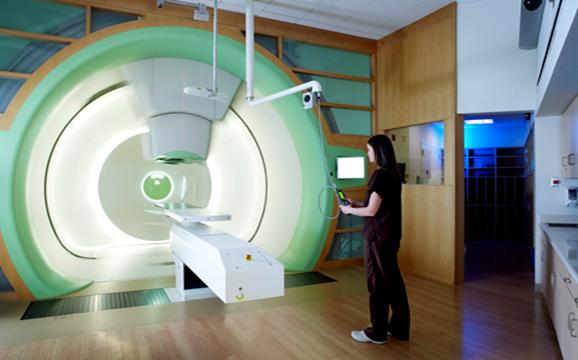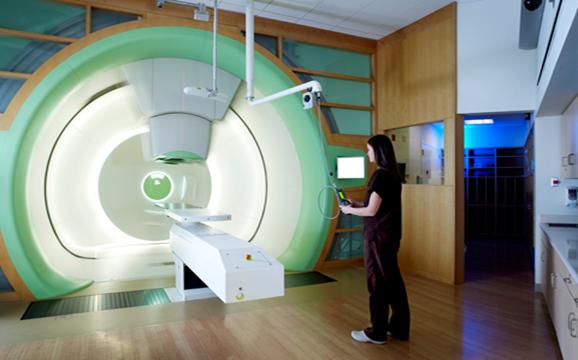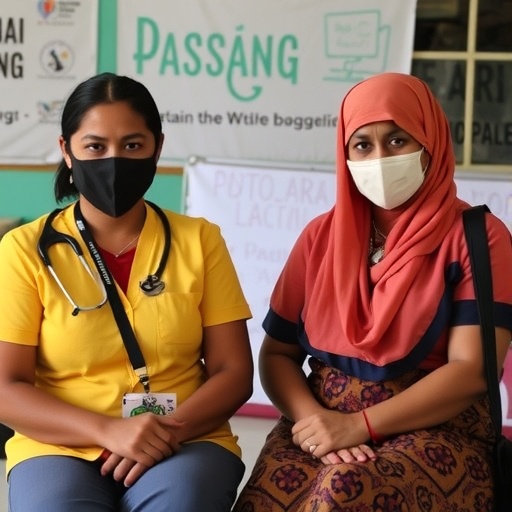
Credit: Penn Medicine
PHILADELPHIA – Insurance companies end up covering proton therapy treatment for pediatric cancer patients in 97 percent of the cases they originally deny once those decisions are appealed. Researchers from the Perelman School of Medicine at the University of Pennsylvania analyzed five years of coverage decisions at Penn's Roberts Proton Therapy Center. They discovered that roughly one in 10 pediatric cancer patients are initially denied coverage for the cutting edge and costly treatment – yet nearly all patients ultimately get approval. They published their findings in Pediatric Blood & Cancer today.
Proton therapy has a few key differences from traditional radiation, but the main advantage is that the radiation beam itself stops when it hits its target as opposed to going all the way through the patient's body. This means it can focus on attacking the tumor while sparing healthy tissue – something that's especially important in pediatric patients, since radiation can impact development of the brain, spine, and other areas.
"Most oncologists agree it's a better choice than traditional radiation in pediatric cases because it's so targeted," said the study's co-author Eric Ojerholm, MD, an instructor in Radiation Oncology at Penn. "However, since we don't have data from randomized clinical trials with these patients, we don't have the conclusive evidence that insurance companies normally like to see before universally approving coverage."
While that lack of trial data has led to unfavorable language in many insurance policies, Ojerholm said this study shows it does not seem to be stopping insurance companies from covering proton treatment in pediatric patients.
The Penn team looked at five years of insurance coverage data for pediatric proton cases in the Roberts Proton Therapy Center spanning from 2010 to 2015. Of the 287 cases they evaluated, 255 (89 percent) were approved outright while 32 (11 percent) were initially denied. Following appeals, 31 of 32 initially denied cases (97 percent) were overturned and approved. "This shows that insurers are ultimately willing to accept the benefits of proton therapy for young cancer patients, however a great deal of time and resources are still wasted in appeals of coverage denials and ultimate approvals," said the study's co-author Christine Hill-Kayser, MD, an assistant professor of Radiation Oncology at Penn.
The researchers discovered two factors most associated with initial denial: age and tumor type. Some patients over age 18 develop a cancer that doctors consider pediatric because of how the tumor typically behaves. Examples include neuroblastoma, rhabdomyosarcoma, germinoma, and Ewing sarcoma. Even though someone with these diseases may be over 18 years old, doctors would typically treat the cancer the same way they'd treat a pediatric patient. Yet patients in this group were initially denied four times as often as those 18 or younger.
The second theme that emerged was that cancers located outside the brain or spine were denied 4.5 times more frequently.
"This is probably because the strongest evidence for pediatric proton therapy is in brain and spine tumors," Ojerholm said. "Insurers appear willing to accept these cases but may initially be more hesitant for other disease sites."
Despite the high rate of success on appeal, researchers say the process itself can be problematic. The average appeal took about a week. It involved letters, peer-to-peer phone calls, or in some cases, both. In 28 percent of cases, it took multiple rounds of appeal before coverage was finally approved.
"These appeals mean time and resources for patients, doctors, and insurers," Hill-Kayser said. "If the ultimate outcome is overwhelmingly going to be approval anyway, we believe there should be a way to streamline this process."
The researchers suggest changing the language of insurance policies to recognize the distinction of pediatric tumors. They also propose classifying patients between the ages of 19 and 30 who have these pediatric cancers as pediatric cases, which would eliminate one of the common causes of denial.
The researchers did note potential limitations of the study, including that all data came from a single hospital. A different center in a different part of the country would have its own unique mix of insurance carriers and plans, which may produce a different result. Further, Penn has an advisory board that evaluates patients for proton therapy and only recommends those most likely to benefit from the treatment. If another center skips that step, they may see more denials or less reversal on appeal.
###
Penn Medicine is one of the world's leading academic medical centers, dedicated to the related missions of medical education, biomedical research, and excellence in patient care. Penn Medicine consists of the Raymond and Ruth Perelman School of Medicine at the University of Pennsylvania (founded in 1765 as the nation's first medical school) and the University of Pennsylvania Health System, which together form a $6.7 billion enterprise.
The Perelman School of Medicine has been ranked among the top five medical schools in the United States for the past 20 years, according to U.S. News & World Report's survey of research-oriented medical schools. The School is consistently among the nation's top recipients of funding from the National Institutes of Health, with $392 million awarded in the 2016 fiscal year.
The University of Pennsylvania Health System's patient care facilities include: The Hospital of the University of Pennsylvania and Penn Presbyterian Medical Center — which are recognized as one of the nation's top "Honor Roll" hospitals by U.S. News & World Report — Chester County Hospital; Lancaster General Health; Penn Wissahickon Hospice; and Pennsylvania Hospital — the nation's first hospital, founded in 1751. Additional affiliated inpatient care facilities and services throughout the Philadelphia region include Good Shepherd Penn Partners, a partnership between Good Shepherd Rehabilitation Network and Penn Medicine.
Penn Medicine is committed to improving lives and health through a variety of community-based programs and activities. In fiscal year 2016, Penn Medicine provided $393 million to benefit our community.
Media Contact
John Infanti
[email protected]
215-301-5221
@PennMedNews
http://www.uphs.upenn.edu/news/
Related Journal Article
http://dx.doi.org/10.1002/pbc.26729






